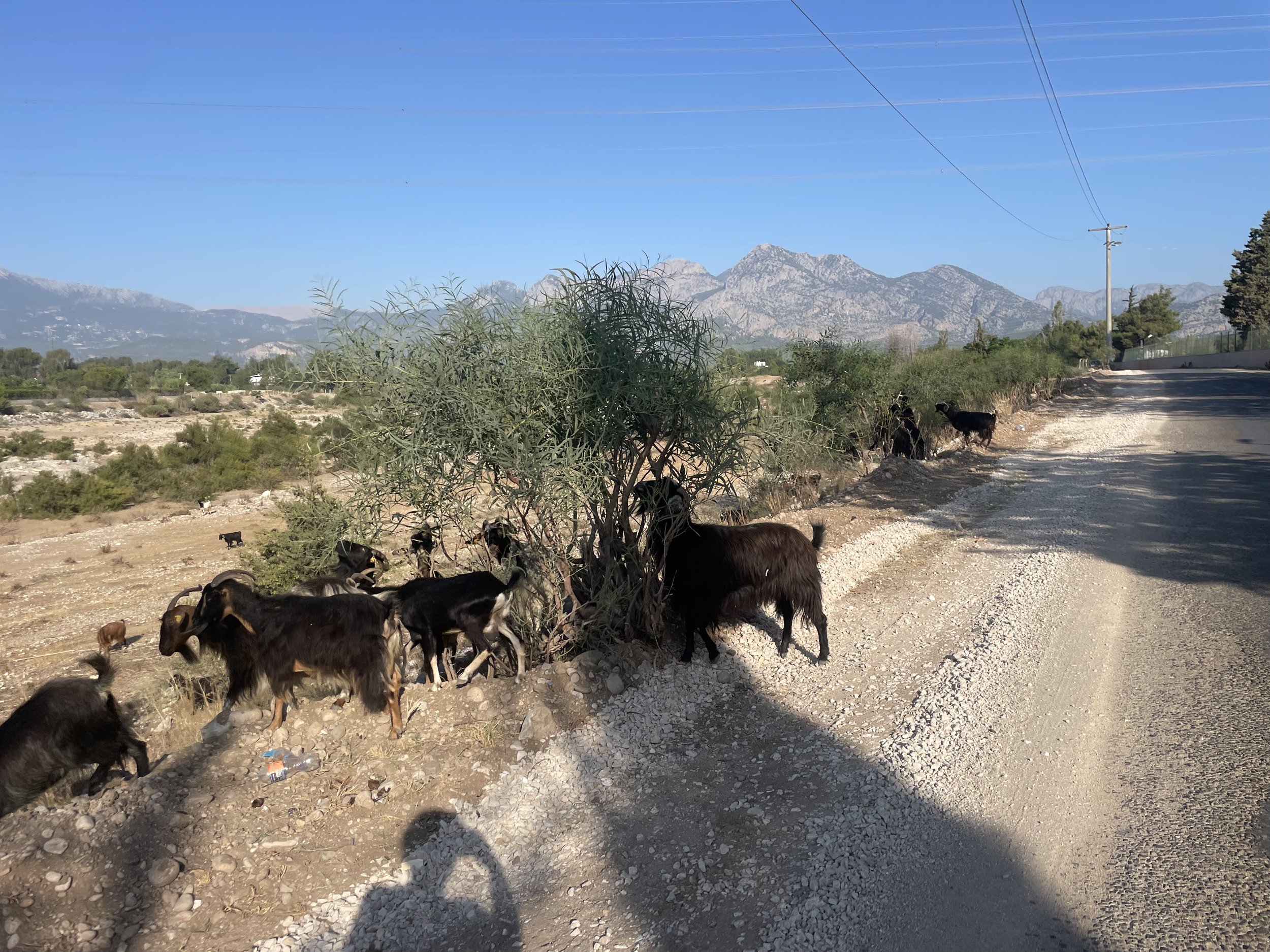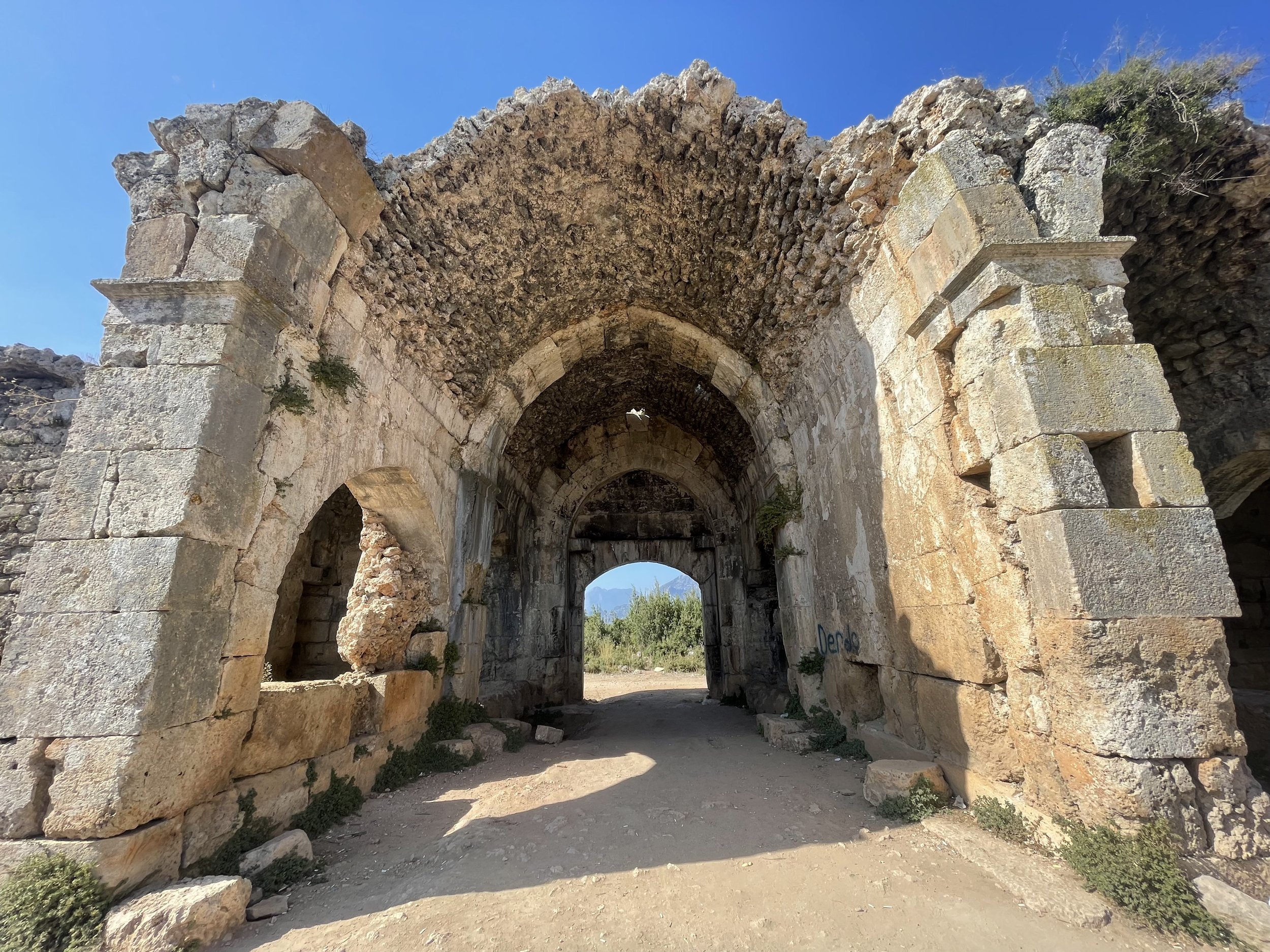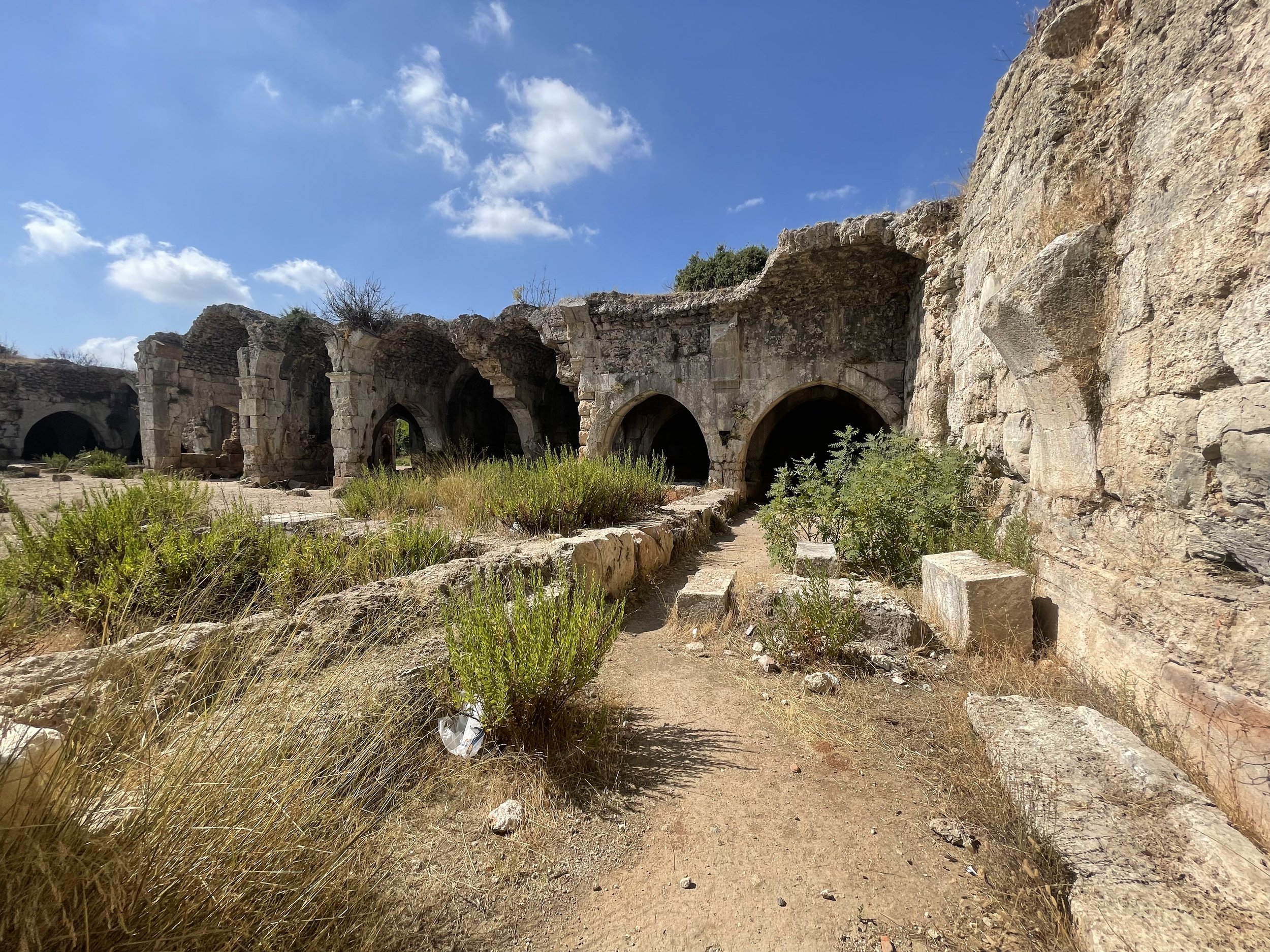The Ruins of Evdir Han
Continuing my journey across time in Antalya, I ventured to a place with a unique history. After riding up and down the Western Taurus mountains back to back, my legs needed an easy recovery ride.
It so happens to be that after visiting the ancient city of Termessos, I looked around google maps to see if there was anything around it worth visiting. The ruins of Evdir Han were within the area I wanted to explore, so that settled where I was going that day.
Taking the same backroads I found on the way back from Termessos a few days earlier, I opted for that since the scenery was unreal, and I avoided most major roads, which meant little to no cars around.
The Route:
The backroads meander the foothills of the Western Taurus mountains for a bit, running along dry riverbeds that fill up seasonally, cutting through a few farming villages. Luckily, a roadside bakery I frequented when I was there was on the way out. So I stopped for breakfast and Turkish tea and, of course, shared the table with one of the locals.
The backroads pass by farms and quaint villages, and the roads are filled with figs, pomegranates, peaches, and even fresh walnuts! (which turned out to be nonedible when fresh, found out the hard way…) A true fruit basket region if you ask me. I was missing some cheese and nuts; I would’ve had an entire cheese board just picking fruit from the side of the road.
Those roads were magical, to say the least. And knowing that I’m riding on the same ground that many past nations walked is surreal. The evidence isn’t just in the books but within the forests and on the side of the road. I haven’t really experienced running into ruins of past nations in the middle of the woods outside of Turkey and Spain.
Continuing up the road, I reached the bottom of a mesa that towers over the area. A few switchbacks here and there, and I got the top. The view of Antalya’s coastline with the Western Taurus Mountains is something out of J.R.R. Tolkien's books. I swear I saw a Pegasus flying through the clouds above Termessos, but I could be mistaken…
By now, I was only a few miles away from the ruins of Evdir Han. So, when I got there, I was expecting something more dramatic, like being in the middle of the woods or having to find my way into the ruins through the bushes. But instead, the ruins sat across from the recently developed housing area.
Still, though, Seeing these ruins was very important to me. The ruins of Evdir Han sit on the remains of the ancient city of Termessos. Perhaps you read that article about Termessos, but if you haven’t, Termessos used to be an incredibly developed city in the region. Apparently, the city was much bigger than just the remains on top of a mountain.
The ruins of Evidr Han were built by the Great Seljuk Empire circa 1200. A Han is a caravansary for merchants & travelers on the old Seljuk trading route connected to the Silk Road. Evdir Han was the largest of its kind in Minor Asia at the height of its existence.
This Han has been mentioned many times under different names across history, as “Korkuteli Han” or mentioned without its name and instead described by its mesmerizing Seljuk architecture.
That was the first thing that captured my attention. The main portal where the gate had stood is crowned with this geometric pattern carved into limestone. A work of art that fascinated travelers over the years and till this day.
The architecture of this Han deemed it one of the most unique Hans in all of Anatolia. Compared to the many Hans across Anatolia, this Han resamples the architecture of those found in Central Asia and Persia (modern-day Iran). Which is expected given how big the Seljuk empire was.
Walking through the gates, you get a perfect few of the mountains behind the northern walls. And with some imagination, you can visualize how bustling this Han used to be. Filled with goods brought from all parts of the old world, as far as China.
Stepping into the Han was like stepping into a time machine. I couldn’t fathom that over 800 years have passed, and this place still stands!
Bordering a creek, the rectangle-shaped Han is perfectly positioned to serve its travelers. In fact, early excavations of the area showed an underground cistern that was believed to serve a few purposes, such as water storage and a bath.
Regardless of how old this place is, it boasts form & function. The layout of the Han is quite unique, though, compared to its counterparts across Anatolia. The Han is designed with inspiration drawn from the east, Persia to be exact. This is evident due to its 4 iwans (a vaulted portal opening onto a courtyard), a common style found even in Mesopotamian ruins. Compare that to usual Hans in Anatolia, where they’re mainly composed of a courtyard with some covered sections.
All the information I found about this Han speaks of its unique and somewhat peculiar design. Given it's one of very few, if not the only Han in Anatolia, built that way, it stands out as an anomaly to historians.
Leaving the how what and when behind; because, trust me, I could go on and on about the history and architecture of this Han. But I probably gave you enough information to make you curious about this place.
Walking through the main gate, the air stood still. It was just me and the birds I scared out of their nests above me. This was the closest I felt to what Indiana Jones, raiders of the lost ark, of course! Although it was in a state of dilapidation, you could still see details in every direction.
It was great to see that the Han still serves travelers, through its beautiful architecture, even after 8 centuries.
I walked around the place and through what used to be closed sections, rooms, or shops, perhaps? Not sure, but I just wandered around. Another thing I found interesting was the use of a variety of stones. Of course, some were the usual white stone found around the area. Still, occasionally, you’ll see a repurposed Greek-style column used as a building block. There were also random carvings scattered across, with no pattern.
Walking under the arches, with a very tall ceiling in the eastern section, you’ll find a long corridor that’s not sectioned like the rest of the Han. Separated from the courtyard and sitting a bit lower, with views of the mountain where Termessos sits, no wonder this place was so unique.
Visiting this place was great on so many levels. One of those is seeing a place that perhaps sold good brought from my neck of the woods (or lack thereof), Kuwait. Believe it or not, offshoots of the silk road once traveled through Kuwait, towards the center of the Arabian peninsula, and all the way to Yemen. As written above, silk road traders made it all the way to this Han and beyond; perhaps one of our ancestors made it that far?
I guess history does repeat itself!
I looked at my watch and was shocked that over an hour had passed just checking out the ruins. So I took a final lap here and there before continuing on the short recovery ride I was on.
I continued north for a little bit before jumping on a gravel road parallel to a manmade water channel. The road eventually returns to the main road where Termessos park is. Before reaching the junction, I came across this odd structure next to the road. It reminded me of similar structures across Valencia, Spain, used for water storage.
Pretty cool, indeed.
Hungry and longing for an afternoon cup of coffee, I continued back to the coast. Taking the same back roads, I took on the way out. The view looking towards the Western Taurus Mountains, surreal as always, stops you in your tracks. The clouds collide with the peaks as the wind blows.
Views like these are why I fell in love with the place.
Retracing my way back to the Airbnb, I barely escaped the hottest part of the day. But thankfully, there was ample tree coverage on my route, shading me from the hot August sun.
There’s much more to share about Antalya, and I will continue to write these as I go.
So stay tuned!



























